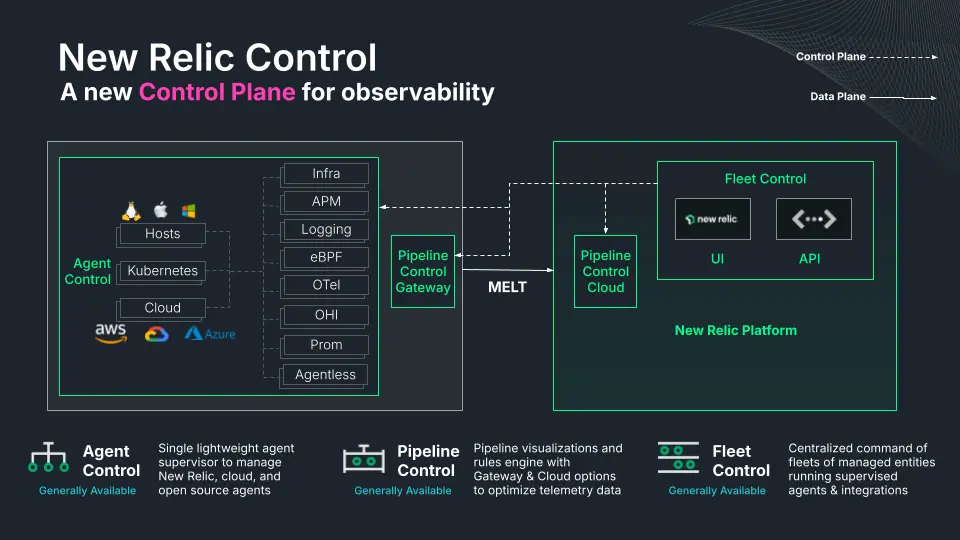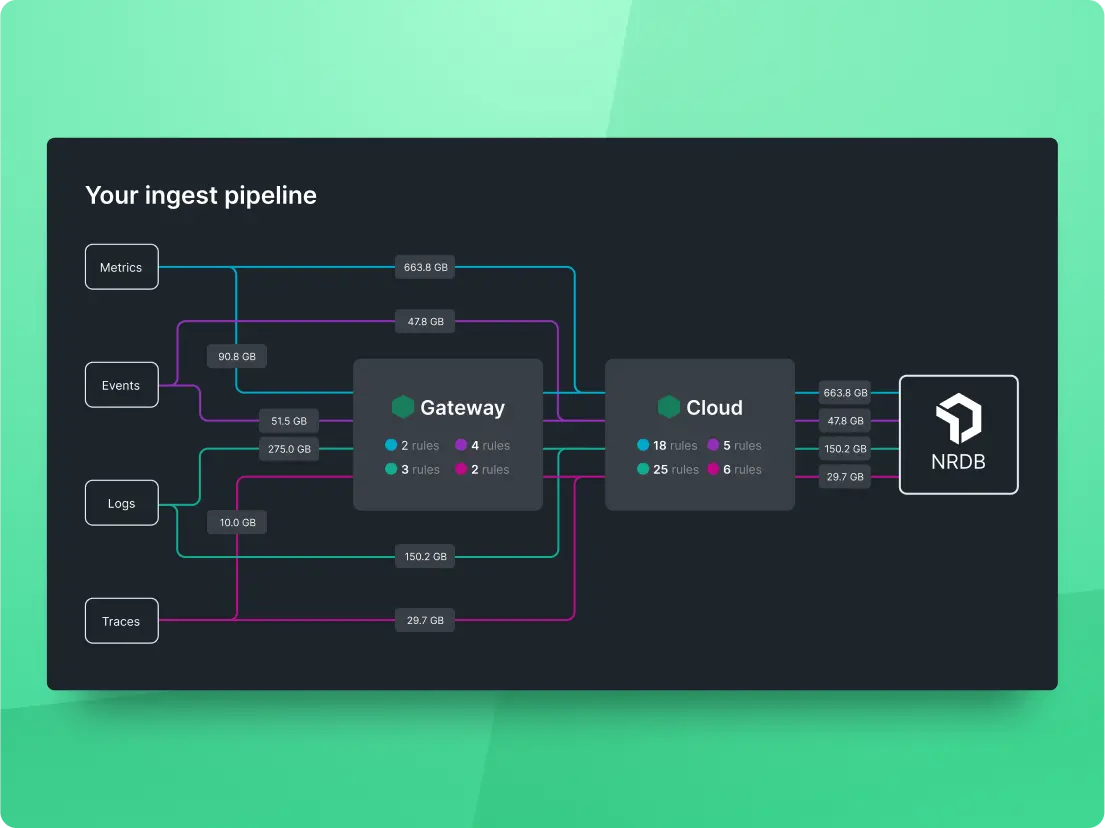New Relic Control: Unified Governance for Observability
The complexity of managing instrumentation, telemetry data, agents, and compliance rules across sprawling infrastructure often becomes a bottleneck. Enter New Relic Control, which promises to turn that chaos into a streamlined, governed, and cost-efficient observability regime.
Here’s a breakdown of its business value, why enterprises should care, and how it can shift your observability from overhead to competitive advantage.
What Is New Relic Control?
At its core, New Relic Control is a unified control plane for observability. It centralises, automates, and governs the lifecycle of agents and telemetry across your tech estate. It bundles three main capabilities:
- Fleet Control — manage fleets of agents (configurations, rollouts, RBAC, audit trails) centrally.
- Agent Control — lightweight supervision of instrumentation (on Kubernetes clusters and now hosts) to enforce config compliance, health, and updates.
- Pipeline Control — rules engine and visualisation to filter, route, and optimise telemetry data before it lands in New Relic (reducing noise and cost).
Key Benefits (and Why You Should Sit Up)
Here’s where the rubber meets the road. If you care about ROI, risk, speed, or compliance, this is relevant to you.

1. Reduced Operational Overhead
Manually updating, patching, and configuring agents across hundreds or thousands of nodes is tedious, error-prone, and slow. With Fleet Control + Agent Control, your devops/observability teams can push configurations uniformly, monitor drift, and automate rollouts. That time saved is headspace for innovation, not firefighting.
2. Consistency, Governance & Compliance
In regulated industries (finance, health, telecom), inconsistent instrumentation or data collection can violate compliance. Control enforces standard policies (e.g., what you collect and how long you retain) across your entire estate. The audit trail built into Fleet Control enhances traceability for audits and internal governance.
3. Risk Mitigation & Security
Blind spots in observability are dangerous, as they can lead to critical failures or security incidents being missed. Control helps reduce those by ensuring your instrumentation is correctly deployed, healthy, and updated. Misconfigured agents are also attack surfaces; automated governance helps shrink that risk.
4. Cost Optimisation
Telemetry ingest and storage can balloon with uncontrolled noise. Pipeline Control gives you a chance to filter or reduce unnecessary data in flight (before it’s stored), thereby reducing your bill. Less wasted data = more cost-effectiveness.
5. Faster Time to Insight
When instrumentation is managed reliably, new services or nodes can be onboarded quickly without complex hand-wringing. That means less latency between deploying a feature and having meaningful visibility over it. For businesses where speed is competitive (SaaS, e-commerce, adtech), that’s gold.
6. Scalability & Future-proofing
As your infrastructure grows (cloud, hybrid, edge, containers, hosts), the tooling burden often scales superlinearly. A centralised, purpose-built control plane scales more gracefully than ad hoc scripts, spreadsheets or homegrown tools.

Use Cases & Who Wins
It’s not just for giant corporations. Here are scenarios where New Relic Control shines:
- Enterprises with large, distributed infrastructure (multi-region, hybrid) — when agent sprawl is chronic.
- Highly regulated sectors — where policy, audit, and consistency matter.
- Organisations migrating to microservices, containers, or edge architectures — needing instrumentation governance as complexity rises.
- DevOps & platform teams looking to offload guardrails from app teams and enforce defaults.
- Cost-conscious businesses that want observability without a runaway telemetry budget.
How to Get Started
From the blog, the onboarding path is designed to be smooth and straightforward.
- In your New Relic account, enable New Relic Control via “All Capabilities → New Relic Control.”
- Define your configurations in Fleet Control, grouping agents into fleets (set policies, deployment rings).
- Install Agent Control on Kubernetes clusters or hosts, and assign them to the fleets.
- Use the Fleet Control UI to validate assignments and rollout.
- (Optional but critical) Define rules in Pipeline Control to shape telemetry data flows.
Why New Relic Control Matters
New Relic Control transforms observability from a scattered cost centre into a controlled, predictable, scalable enabler. For businesses scaling in complexity, every hour lost in configuration divergence, audit friction, or blind spots is an opportunity cost. Control reduces risk, aligns governance, and rationalises telemetry expenses — all while laying a framework for future growth.
If your business is serious about observability as a strategic asset (not just a debugging tool), New Relic Control is a platform you should scrutinise and pilot.
